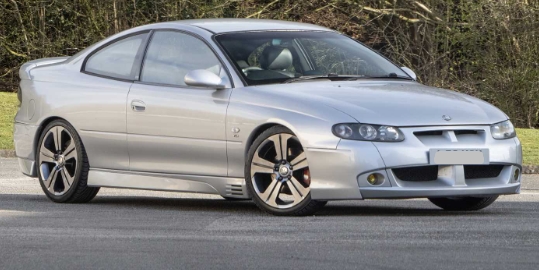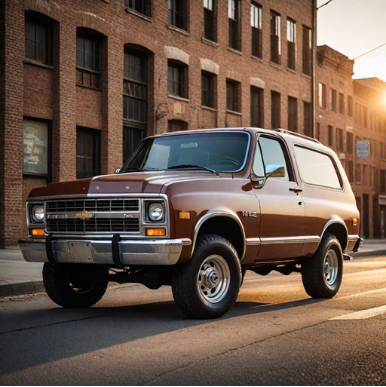The Evolution of the Vauxhall Monaro
The Vauxhall Monaro is an iconic muscle car that epitomizes Australian automotive engineering and performance, yet it also holds a significant place in British and international markets through its rebadged versions. Launched in the late 1990s, the Monaro’s development and evolution reflect a blend of design innovation, engineering prowess, and cultural influence. This article traces the Monaro’s journey from its inception to its discontinuation, detailing its production years, models, and trim levels.
Origins and Development (Late 1990s – Early 2000s)
Background and Conceptualization
The Vauxhall Monaro’s roots trace back to the Australian automotive scene, specifically to Holden, General Motors’ Australian subsidiary. The Monaro was originally developed as a response to the demand for a powerful, stylish coupe that could compete globally, especially in markets like Europe and North America. Its design was heavily inspired by contemporary muscle cars and European grand tourers, aiming to offer a blend of performance and sophistication.
Initial Production and First Generation (2001–2006)
The first-generation Vauxhall Monaro was launched in 2001, built on Holden’s V2 platform, which was itself derived from the Australian Holden Commodore (VT series). This platform was renowned for its robustness and performance potential. The Monaro was assembled at Holden’s plant in Australia, with Vauxhall importing the vehicles for the UK market and other European countries.
Models and Trim Levels (2001–2006)
The initial Monaro lineup was relatively straightforward, emphasizing performance and style. The key models included:
- Monaro VXR (2001–2006): The flagship model, equipped with a powerful 5.7-liter LS1 V8 engine producing approximately 310 horsepower. It featured a six-speed manual transmission as standard, with an optional automatic. The VXR trim offered sport-tuned suspension, limited-slip differential, and sporty styling cues.
- Monaro CV (2001–2006): The base trim level, offering a more affordable entry point with similar styling but fewer performance features. Powered by the same LS1 V8 but with less emphasis on performance upgrades.
- Special Editions: Several limited editions appeared during this period, such as the Monaro ‘CV8’ and ‘CV8-R,’ which offered subtle performance and aesthetic enhancements.
Design and Features
The first-gen Monaro boasted a sleek coupe silhouette with distinctive front grille and aggressive lines. Inside, it featured supportive sport seats, a driver-focused cockpit, and optional leather upholstery. The car’s handling was praised for its balance and responsiveness, making it a favorite among enthusiasts.
Second Generation and Facelift (2006–2007)
Facelift and Transition
In 2006, the Monaro received a minor facelift, which included updated front-end styling, new alloy wheel designs, and interior refinements. Despite these updates, the production was nearing its end, as Holden announced the discontinuation of the model due to declining sales and shifting market priorities.
End of Production and Legacy
Production of the first-generation Monaro ended in 2006, with the last units assembled in Australia. Despite its relatively short lifespan, the Monaro gained a cult following, especially among car enthusiasts and collectors, thanks to its performance credentials and distinctive style.
The Revival: The Second Generation Monaro (2006–2007)
While the original Monaro was discontinued in 2006, the nameplate was briefly revived in 2006 with a more refined, modern interpretation based on different platforms.
Production and Market
This later version was essentially a rebadged version of the Chevrolet Omega, produced by Holden. Its production spanned from 2006 to 2007, primarily for the Australian market and limited exports to select regions.
Models and Trim Levels
The 2006-2007 Monaro featured:
- Monaro VXR: The top-tier model, equipped with a 6.0-liter LS2 V8 engine producing approximately 390 horsepower. It featured sport-tuned suspension, unique badging, and optional performance packages.
- Base Monaro: Offered with similar styling but with less emphasis on performance features and power.
Design and Features
This iteration maintained the coupe silhouette but featured modern styling cues, including updated front and rear fascias, LED lighting elements, and a more refined interior with modern infotainment options.
The Australian Revival: The 2004-2005 Monaro (V2 Series II)
While the first-generation Monaro was in production from 2001-2006, it underwent an update in 2004, often referred to as the V2 Series II, which further refined its performance and aesthetics.
Models and Trim Levels
- CV8: The standard V8 model with the 5.7-liter LS1 engine.
- CV8-R: A sportier variant with enhancements such as lowered suspension, unique wheels, and performance-oriented features.
- GTS (Limited Edition): A rare, high-performance variant with additional power, exclusive styling, and interior upgrades.
Notable Models and Special Editions
Throughout its production, the Monaro saw various special editions that catered to enthusiasts and collectors:
- Monaro CV8-R (2004–2006): Focused on enhanced handling and aesthetics, featuring unique wheels, body kits, and suspension tweaks.
- Monaro GTS (Limited Edition): Offered increased power and exclusive styling elements, making it highly sought after.
- Monaro ‘Final Edition’ (2006): Marked the end of the first-generation production run, often featuring unique badging and limited availability.
Technical Specifications and Powertrain Evolution
The Monaro’s powertrains evolved over the years as follows:
- 2001–2006 (First Generation): Predominantly powered by the 5.7-liter LS1 V8 engine, producing around 310 horsepower. Some models, such as the GTS and CV8-R, featured performance enhancements that pushed power figures higher.
- 2006–2007 (Second Generation): Equipped with the 6.0-liter LS2 V8 engine, delivering approximately 390 horsepower, representing a notable upgrade in performance.
The vehicles generally featured rear-wheel drive layouts, with manual and automatic transmission options, and sport-tuned suspensions for dynamic handling.
.
Many car aficionados have multiple hobbies, like boating as well as auto stuff. Those who don’t already own a boat (and even some that do), may have thought about building their own boats. It’s really not as hard as you’d think. Just take a look at these easy boat building plans!

.
Discontinuation and Legacy
Despite its popularity among car enthusiasts, the Vauxhall Monaro was discontinued after the 2007 model year, primarily due to market shifts, production costs, and the broader decline of traditional muscle cars in favor of modern, emission-compliant vehicles.
The Monaro’s legacy endures through its influence on performance car culture, its rarity, and its status as a symbol of Australian automotive prowess. Its design and engineering have been appreciated worldwide, with many owners and collectors preserving and restoring these vehicles.
Conclusion
The Vauxhall Monaro’s evolution from 2001 to 2007 encapsulates a brief but impactful chapter in performance automotive history. From its debut as a muscular coupe based on Holden’s Commodore platform to its brief revival as a modern muscle car, the Monaro exemplified power, style, and engineering excellence. Its various models, trim levels, and special editions reflect a commitment to performance and aesthetic appeal, securing its place in automotive legacy.







